Sporting Clays is one of the most entertaining clay pigeon shooting disciplines due to the absolutely inventive and exciting way the difficult, or apparently easy, clays are launched.
This is so obvious that even people who don’t shoot will be thrilled by this particular discipline that’s a mix of the excitement and the unexpectedness you experience when hunting, with the strict scheme of the main clay pigeon disciplines.
Shooting Sporting Clays, as well as being a lot of fun, is also a great way to get to know your gun (which may also be the same one you use for hunting) and develop an effective aiming and shooting technique both for wing shooting and point shooting.
It’s more fun because you have to shoot a wide range of clays launched in patterns that can take you by surprise, with clays simulating the flight and movements of a principal species of game as it takes flight.
Last but not least, how could we fail to mention the fast, double clays that force the shooter to track two clays simultaneously.
As a consequence, in its various versions, Sporting Clays helps you gain experience with different shooting techniques and in a certain way “experiment” a lot more than in traditional Olympic disciplines, which require strict, precise shooting techniques if you want to be competitive with the best possible results.
Sporting and Compak Sporting: the two Sporting Clays’ specialties
It can be said that Sporting Clays was invented as a way to take shooters “hunting”... with clays! There are two similar, but also quite different, specialties called Sporting and Compak.
Sporting is the walked-up version and, exactly as they would when hunting, the shooters move from one station to the next with their shotgun in the countryside or woodland, just like on a real hunt.

At every station the shooters target clays that simulate different types of animals, from the dash and run of the hare to the flight of small, migratory birds, with targets breaking cover out into the open as they pass.
The Compak version of Sporting Clays on the other hand is more similar to Olympic clay pigeon shooting. In this case in fact, instead of moving around a shooting range that’s designed to recreate a hunt, shooters have just five platforms or shooting stands.
From each platform you have a clear view of the fenced-off target overflight area where shots are taken, within the boundaries of which various clays are launched.
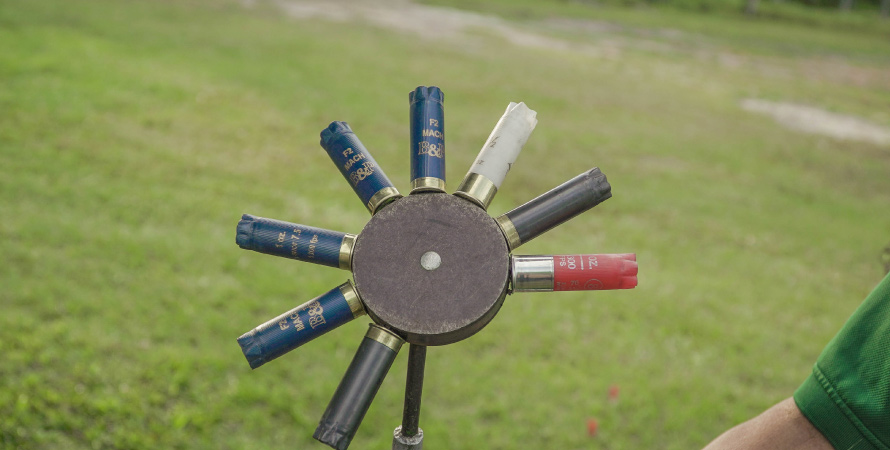
Like Sporting, in Compak the clays also simulate the trajectories and flight or run of different types of game, or the launches might be highly imaginative with trajectories studied to make the shot as difficult as possible, such as doubles, micro-clays, lofted launches or approaching clays for example, which are launched towards the shooter by a machine positioned far away.
Sporting Clays launch patterns: the most frequently used and the hardest to hit
Both Sporting Clays specialties therefore differ mainly from Olympic disciplines in terms of the various, unusual clay launch patterns.
Every Sporting or Compak competition can be different, because Federal regulations suggest organizers experiment with launches that are as imaginative and different as possible. Furthermore, in the walked-up version, as the place you’re shooting in changes, even classic launches will always be in a different “setting”.
Some clay launching patterns are obligatory to meet regulations or may have become classic patterns in time so they’re used in almost all Sporting Clays’ tournaments. Knowing these patterns to perfection will help you know where to aim to break the clays launched in various ways.
The hare or rabbit clay
The shape and structure of this clay are different to the others. In fact, it’s launched fast towards the ground by a special machine. The clay tends to roll fast and can often bounce, simulating the run and movements of a running hare. So, the difficulties you might find with a hare clay, may depend on the:
-
Morphology of the terrain: the more uneven the terrain is, the more sudden and uncontrollable the clay’s bounces will be.
-
Angle of the launch and view: If the clay is launched from the right or left it will be easier to hit as the hare crosses your line of sight and represents a bigger target in terms of clay surface area. But sometimes the hare clay might be launched straight towards the hunter or cross your line of sight diagonally so the target will be much smaller.
The pigeon clay
In general, two clays are launched from machines at the two sides of the stand crossing the entire line of sight from the platform, but on very different trajectories. They’re called Pigeon clays because the trajectory is similar to that of real game.
There are three types of Pigeon clay launches:
-
A pair of clays are launched close together on the same trajectory.
-
A pair of clays are launched by the same trap almost always on diverging trajectories, making it harder to keep track of and shoot the second target after taking your first shot.
-
A pair of clays are launched from different traps on different trajectories.
Lofted clays
In this case the clay is launched upwards, almost perpendicularly at high speed and starts to drop when its vertical thrust is overcome by gravity.
It’s a very difficult clay as it’s speed changes continuously. In fact, if you look at it just after it’s been launched it looks really fast, but it quickly loses most of its speed, making the lead we’ve seen useless.
There are three totally different techniques that can be used to successfully break these clays:
-
Shoot the clay as it rises. This sounds like the hardest, but it’s really the most instinctive way. The clay is shot as it rises, just after its launch, with a good lead on its vertical trajectory. You should shoot it before it stalls out.
-
Shooting the clay when it stops rising. Wait until the clay starts to slow significantly, and try to shoot it at the end of its upwards trajectory before it starts to fall.
-
Shooting the clay as it drops. Wait for the clay to start to drop, after in any case having tracked the launch, and try to hit it in the first half of its downward trajectory. This gives you the chance to also effectively fire a second barrel in the last few meters before the clay hits the ground.
Pull and Mark
Clays are often launched in Sporting Clays tournaments in the same ways they are in Skeet. They’re often launched by Pull and Mark machines. In this case the clays have the same trajectories and speed as those launched in Skeet and will tend to drop in different trajectories.
The difficulty with these launches depends substantially on the angle with which the clays are launched in relation to the shooter’s position.
Clays launched from behind the firing line
A clay launched from behind the firing line is one of the most unnatural and toughest targets to shoot, that puts the concentration and skill of even the best shooters to the test.
In fact, the clays are launched from behind the stand, flying over the shooter at different heights and on different trajectories, sometimes straight, sometimes a little to the right or left.
This clay is fast and unexpected, appearing suddenly in the shooters field of view. Unlike other clays, it continues to move away from the shooter fast, even as it drops. Therefore it has to be shot as fast as possible, also allowing for the lead on angular launches and the lead to see on the basis of its upwards or downwards trajectory.
Micro or sparrow clays
Smaller clays may also be used in some of the above launches, obviously making the shot quite a bit more difficult, whatever the trajectory or launch pattern.
With these clays, which should be shot at relatively close ranges, it’s always a good idea to use the smallest diameter shot permitted for each specialty, to produce a saturated spread suitable for the smaller surface area of the target.
Sporting Clays’ shotguns and shells
Having considered the different specialties and types of launches, now it’s time to have a look at the most effective equipment that can put you on the road to success in Sporting Clays. Like all clay pigeon shooting disciplines an over-under (not a hunting shotgun as they’re too light) is the best solution for shooting sporting clays.
But why?
The answer is both because of the ballistic properties of the shotgun, and the requirements of the discipline. Here are some of the main points:
-
Recoil and muzzle rise doesn’t produce a sideways movement in an over-under, as is the case with a side-by-side. The line of sight along one barrel gives you a more precise aim and better collimation with distant targets.
-
Unlike semiautomatics, the two barrels of an over-under let you use different chokes and shells (almost all Sporting and Compak over-under shotguns come with interchangeable chokes) so you can choose different combinations to be ready for the different clays in the various launch patterns used in Sporting Clays.
-
The barrel selector. This is quite a significant advantage in Sporting Clays. In fact, depending on the barrels, chokes and cartridges used, you can choose which barrel to fire first on the basis of the type of clay you’re shooting.
Even the fact that an over-under is heavier than a semiautomatic can be an advantage.
In fact, as its heavier, with the same shells an over-under will tend to have less muzzle rise after the shot, reducing the time required to take another shot at the same clay if you miss, or to line up the second shot when shooting two clays. A heavier gun is also less affected by recoil, so it’s less tiring in a long tournament.
Can I use a semiautomatic shotgun for Sporting Clays?
The answer is certainly, yes.
While an over-under is the best suited shotgun for sporting clays, it’s certainly not the only alternative for practicing this sport.
One of the main reasons Sporting Clays has been such as success in fact is that, especially for those who’ve just started this type of clay pigeon shooting, you can use practically any kind of smooth bore shotgun even in some competitions, without any particular disadvantages.
A good, strong semiautomatic shotgun can be used to great effect in Sporting Clays because it’s easy to use, easier to handle, and it can even be used in some tournaments.
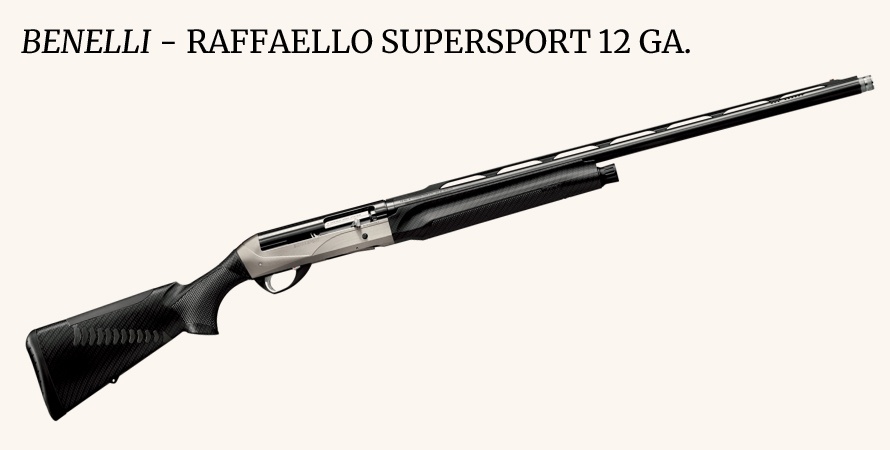
A semiautomatic shotgun in fact, apart from its firing mechanism, which involves several sequential mechanical operations to eject the spent shell and load the next one, absorbs recoil much better than a break-action gun, so you’ll feel less of a kick. Furthermore, the single barrel makes swinging the gun faster and more immediate, and aiming very precise.
The only disadvantage is having to use the same choke, but you can change the width or density of your spread by using different shells. So the best thing to do is to first concentrate on perfecting your technique, before getting into more technical and complexed matters.
Can I use my hunting shotgun for Sporting Clays?
The answer to this is, its depends.
Many hunters, especially at the end of the season, want to try using the shotgun they use for hunting also for Sporting Clays. The reasoning behind this makes sense because if you hunt with a gun you’ll certainly have had the chance to get to know it, so it becomes a natural extension of your shoulder.
What’s more, training with clays can be a great help when hunting with your gun. So, as far as the above is concerned, no problem, quite the contrary, it could even be the best solution.
But there is one problem!
Shooting Sporting Clays isn’t like hunting. First and foremost, you’ll be firing a lot more shots, all the time. A hunting gun, and especially an over-under or side-by-side, isn’t designed to fire a lot of shots one after the other.
Hunting shotguns have more recoil because they’re lighter. When hunting, you might not notice this because between one shot and the next you tend to mentally and physically absorb the kick, but a series of 25 clays isn’t the same. This is especially true in summer when you won’t be protected by thick clothes, as is the case in the winter hunting season.
Then, if (as we hope) you fall in love with Sporting Clays and start to shoot many series, you’ll really put the mechanical strength of your shotgun to the test, in particular the locks.
So, in the case of break-action guns, the answer is: yes, you can use your hunting shotgun for Shorting Clays as long as you’re OK with more recoil and are aware that the intensive use in this sport won’t be good for your gun.
Semiautomatics shotgun are different. In this case, if you own a sturdy, good-quality hunting semiautomatic you’ll have no problems using it for Sporting Clays.
One of the features that’s made modern semiautomatic shotguns such a success in fact is the strong construction combined with the fact that they’re easy to use. For Sporting Clays, a gas or inertia-driven semiautomatic with a passive recoil-absorbing stock is an excellent solution for managing recoil and muzzle rise.
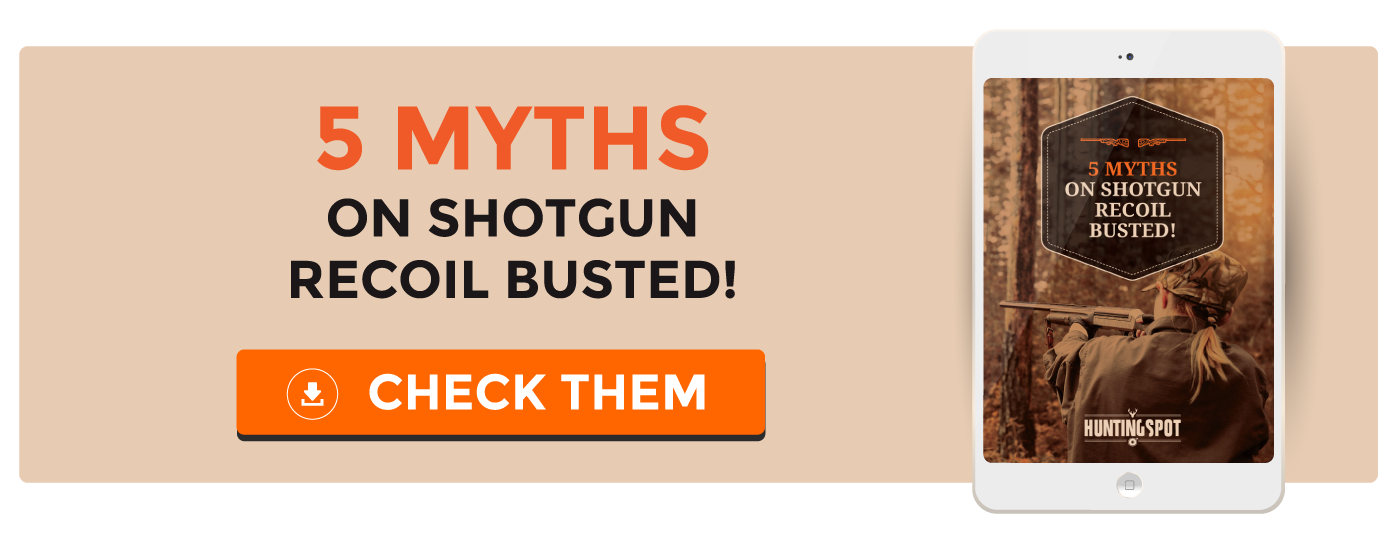
In fact, unlike break-action shotguns where the energy produced by the recoil is all discharged into the delicate mechanisms of the gun, in other words the hinge pins and the locks of the action, on semiauto shotguns this energy is used to power the gun’s mechanisms, so more of it is absorbed.
To sum up, a strong, quality semiautomatic (Made In Italy in this case is always a guarantee) is the most suitable shotgun for many different types of hunting, and for Sporting Clays.
Don’t worry about those who might tell you that a real shooter’s shotgun is an over-under. What counts is breaking clays!
The best barrel length for Sporting Clays
In Sporting Clays, barrel length is much more important than the type of shotgun in order to be able to correctly swing the gun and above all track and target the furthest clays or those launched on an angled trajectory.
A longer barrel extends your line of sight a great deal, making it easier to find the target and improving collimation meaning greater precision due to the greater distance between the action and the front sight.
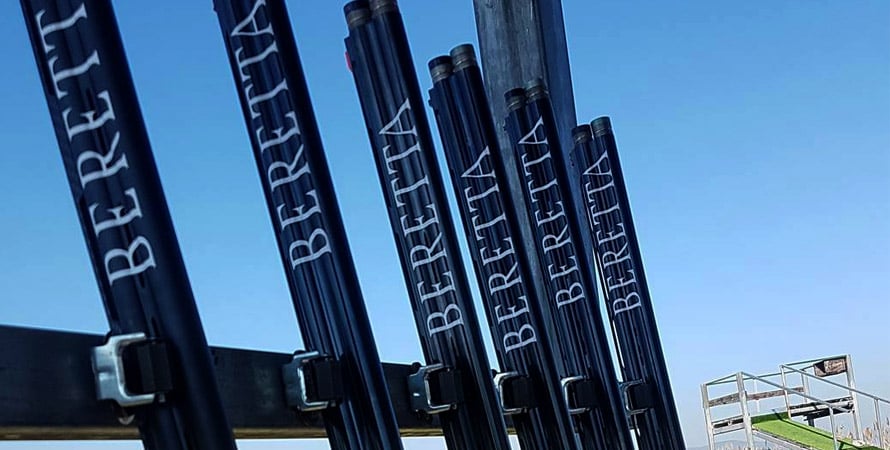
Your swing will be better too with more swing-through in a smoother lateral movement when targeting clays launched at marked angles, which is often the case in Sporting Clays.
The ideal barrel length, for walked-up Sporting Clays where the targets may be at slightly longer ranges and launched at more marked angles, is 76 / 80 cm, while for Compak, 71 cm is fine.
Some shooters, especially in the Sporting discipline, even use 81 cm barrels for the greatest aiming precision at max. ranges.
The disadvantage in this, is that the shotgun feels slightly muzzle-heavy and it will need to be perfectly balanced (remember the balance point is at the hinge pin on break-action shotguns and at the action release button on semiautomatics) to have a gun that’s fast to shoulder and quick to aim, even at the most difficult targets launched at the tightest angles.
The best shells for shooting Sporting Clays
Despite the fact that the name of some clays might lead you to think you’d use the same shells you do when hunting, this isn’t actually the case.
In fact, like most clay pigeon shooting disciplines, generally the max. pellet load allowed for sporting clays is 28 g, less than what would be considered a light hunting load (30 / 31 grams in a 12-gauge).
While clays do simulate the trajectory and movements of animals, they certainly aren’t as tough or lively. In fact, to break clays you don’t have to consider the classic ballistic problems typically encountered when hunting.
The ballistic basics remain valid, with a minimum number of shot that have to reach the target with sufficient residual energy to guarantee breaking the clay when hit.
Furthermore, a limited pellet load, as long as it’s not too over-the-top, is a good way to make it harder to obtain high scores to show off the skills of the best shooters, leaving no room for doubt.
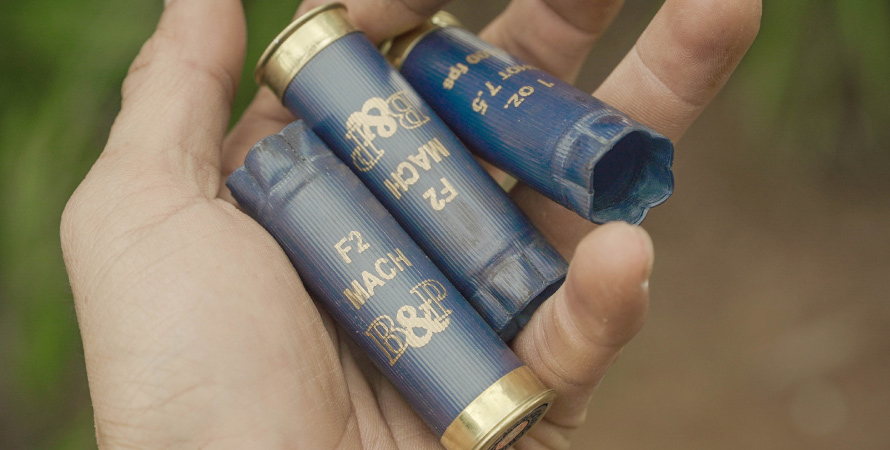
Lighter pellet loads can be used (24 grams in a 12-gauge) for less recoil or to be more suitable for the ballistic properties of smaller bore sizes, but this also makes breaking clays much harder. This is why many Sporting Clays’ shooters choose shells with a 28 gram load, or the heaviest load possible for smaller bore sizes.
Which clay shooting shell?
Not all clay shooting shells are the same. In fact, they’re designed with specific properties to produce the best shot patterns with the greatest clay-breaking power on the basis of the ranges and trajectories at which you’ll be shooting the different clays.
Let’s take a look at an example!
Skeet shells are designed using special spreader wads to guarantee a suitable spread at ranges of 10 / 25 meters, where the clays are usually shot. Pellet size ranges from No. 7.5 - 8 to No. 9.5 which still has sufficient residual energy and clay-breaking power for targets at short ranges.
But what happens at greater ranges?
Skeet shells won’t be as effective because the shot pattern will have too much spread as the range increases and the clay will be hit by too few pellets, that are also too small so they won’t have enough velocity / energy to guarantee breaking the clay.
As well as the trajectories of the clays, the range they’re shot at in Sporting Clays is very similar to ranges game is often shot at while hunting, in other words many of the clays will be shot at an average range of 25 - 35 meters.
The wide variety of ranges compared to other disciplines, just like when hunting, dictates also the discrete use of a choke.
If you’re using a semiautomatic shotgun, it’s best to fit an intermediate ** o *** choke and then choose your shells on the basis of the type of clays and launch pattern. Numerous ammo manufacturers, well aware of this need, develop Sporting Clays’ shells on the basis of ranges (short-medium-long).
At closer ranges wads without plastic container wads, or designed to produce a wide spread at ranges of 18 - 22 meters, give excellent results. Furthermore, in this particular situation it’s a good idea to use No. 8.5 (2.2 mm.) shot, which will produce a wide enough but still dense shot pattern, sure to be effective also against clays launched at an angle with less surface area to hit.
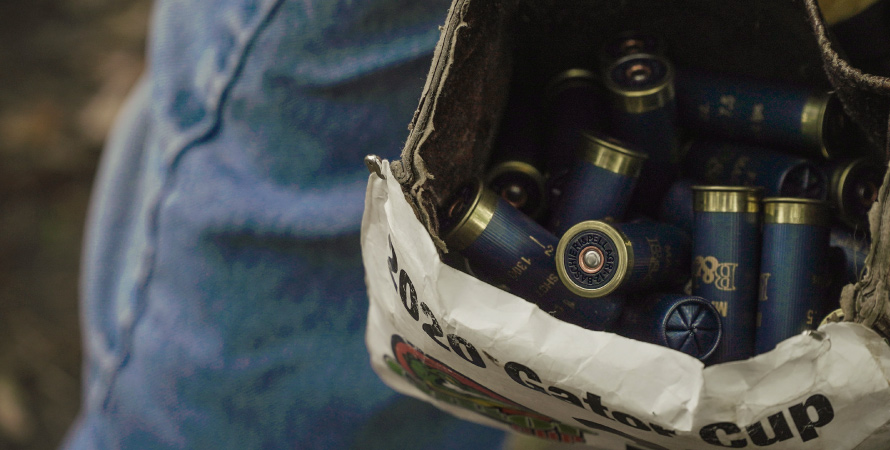
At medium / long ranges a classic plastic container wad will guarantee a high density spread when used with No. 7.5 - 8 shot, with optimal dynamics to develop good clay-breaking power when the clays are hit at medium / long ranges.
With an over-under or side-by-side you have more of a choice, considering the combinations of chokes / shells you can use.
In this case choose a choke that’s not too extreme for your first barrel, similar to the one we recommended for a semiautomatic, choking the second barrel down more, as your second shot will often be taken if you miss the first, at clays that are almost always further away.
Wing shooting and point shooting? How to shoot Sporting Clays
It must be said that shooting techniques, the way we aim and target clays, and the way we shoot the gun are extremely subjective things that change from shooter to shooter.
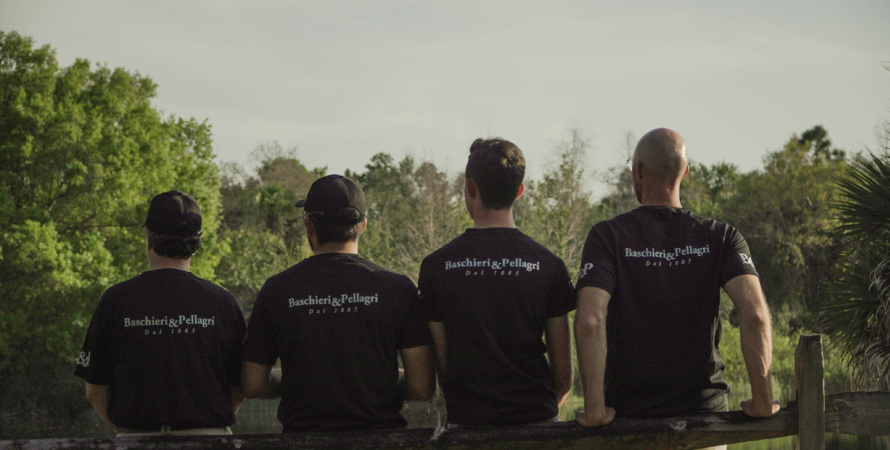
Substantially game, like clays, can be shot using two different techniques, both of which are effective:
Point shooting
The target is shot with quick reflexes, often as soon as it appears in your field of view. The shooter / hunter finds the point where he / she imagines the target will be, a little in front of and / or higher, and quickly takes the shot.
This technique requires reflexes as quick as a knife, and obviously the ability to shoot both quickly and precisely. It’s more suitable for very fast targets that appear suddenly, preferably not too far away.
Wing shooting
This technique is perfect for slower shots taken at longer ranges. It gives you much more time to see, aim at, lock onto and see the lead of the target without rushing. On the contrary, you have enough time to consider its trajectory, speed and the position where it should be hit by the shot in quite a pondered and rational way.
This technique is particularly effective when the target moving on a relatively long arc, remains visible for long enough to consider all of the above points. You don’t need lightning fast reflexes, but you do absolutely need to be able to move as one with your gun and keep your eye on the line of sight for the entire time from when you acquire the target to when you take the shot.
A lofted clay point shot or wing shot
To give you a practical example of these two shooting techniques, let’s consider how they can be used for a "lofted” clay.
Using the first, point shooting technique as soon as the clay is launched it’s tracked for a very short distance and the shot is taken when you see sufficient lead, about one and a half / two meters above the clay.
Using the second technique, the target is tracked from the launch until it stops rising, keeping your eye and the rib aligned and taking the shot when the clay has almost stopped moving, just as it turns and starts to change trajectory.
The same technique can be used for "lofted" clays also as the clay drops. Steady your nerves, wait for the clay to drop, then track the target with the rib, seeing the lead and taking the shot below the target along its trajectory where you think the clay will be when the shot reaches it.

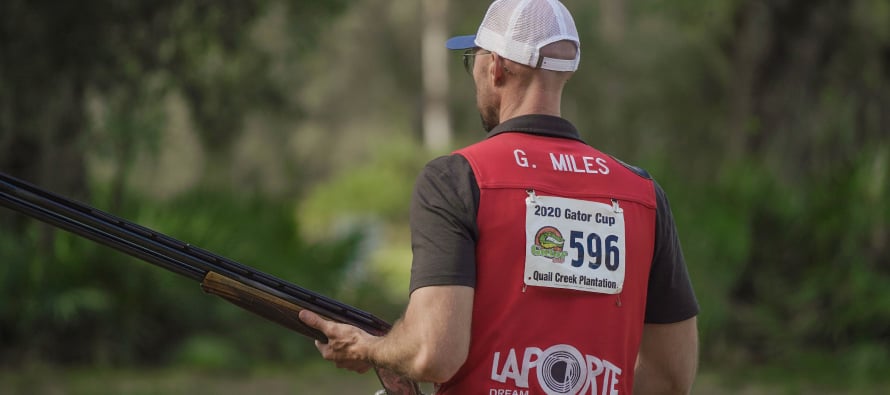
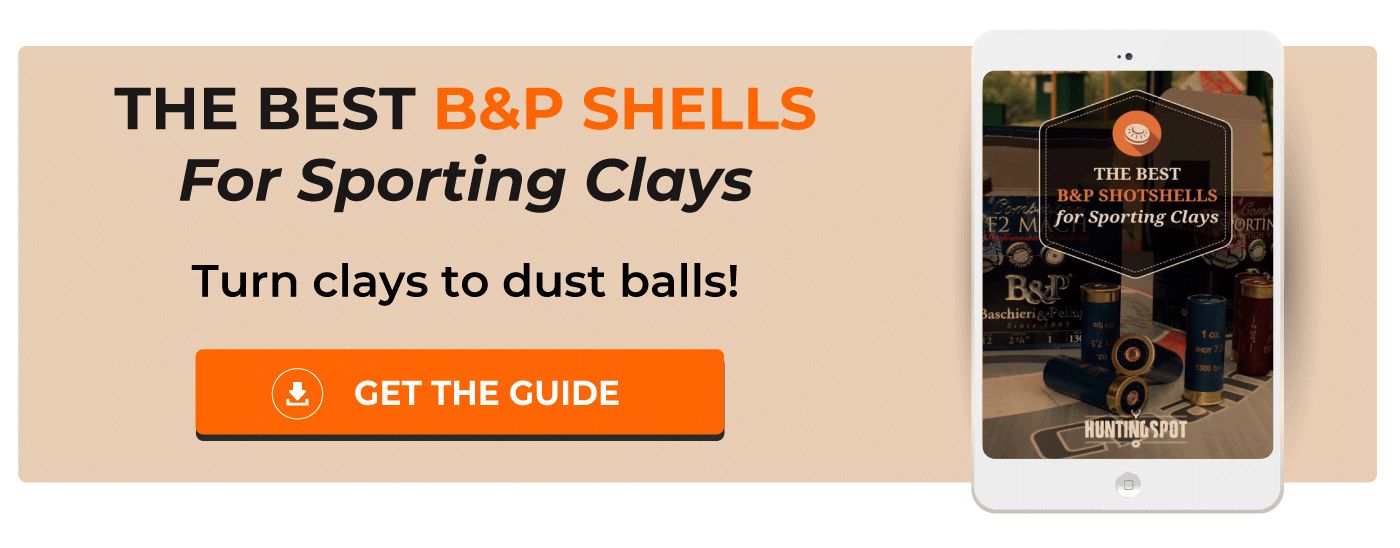
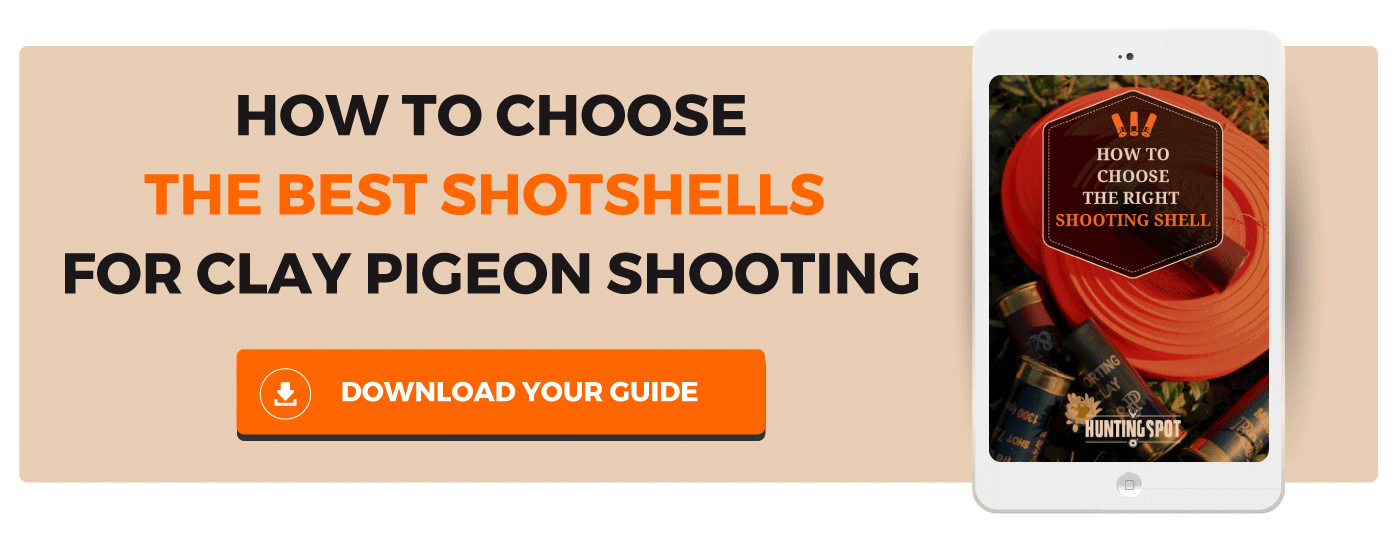



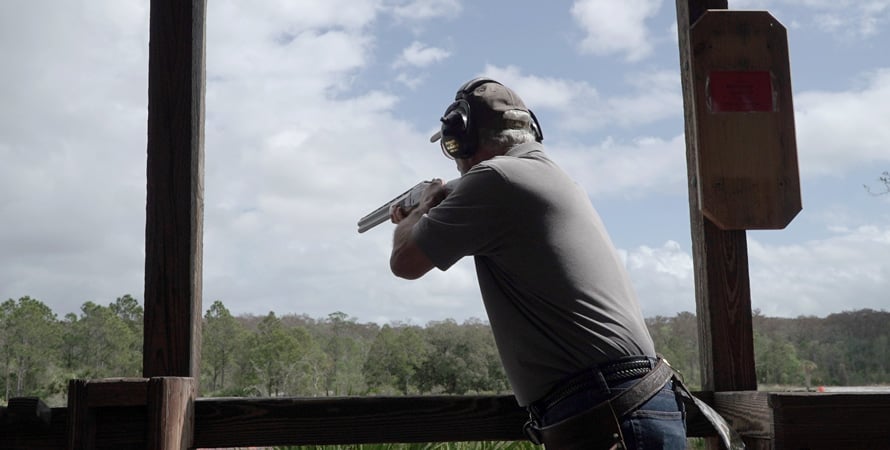
Comment this post